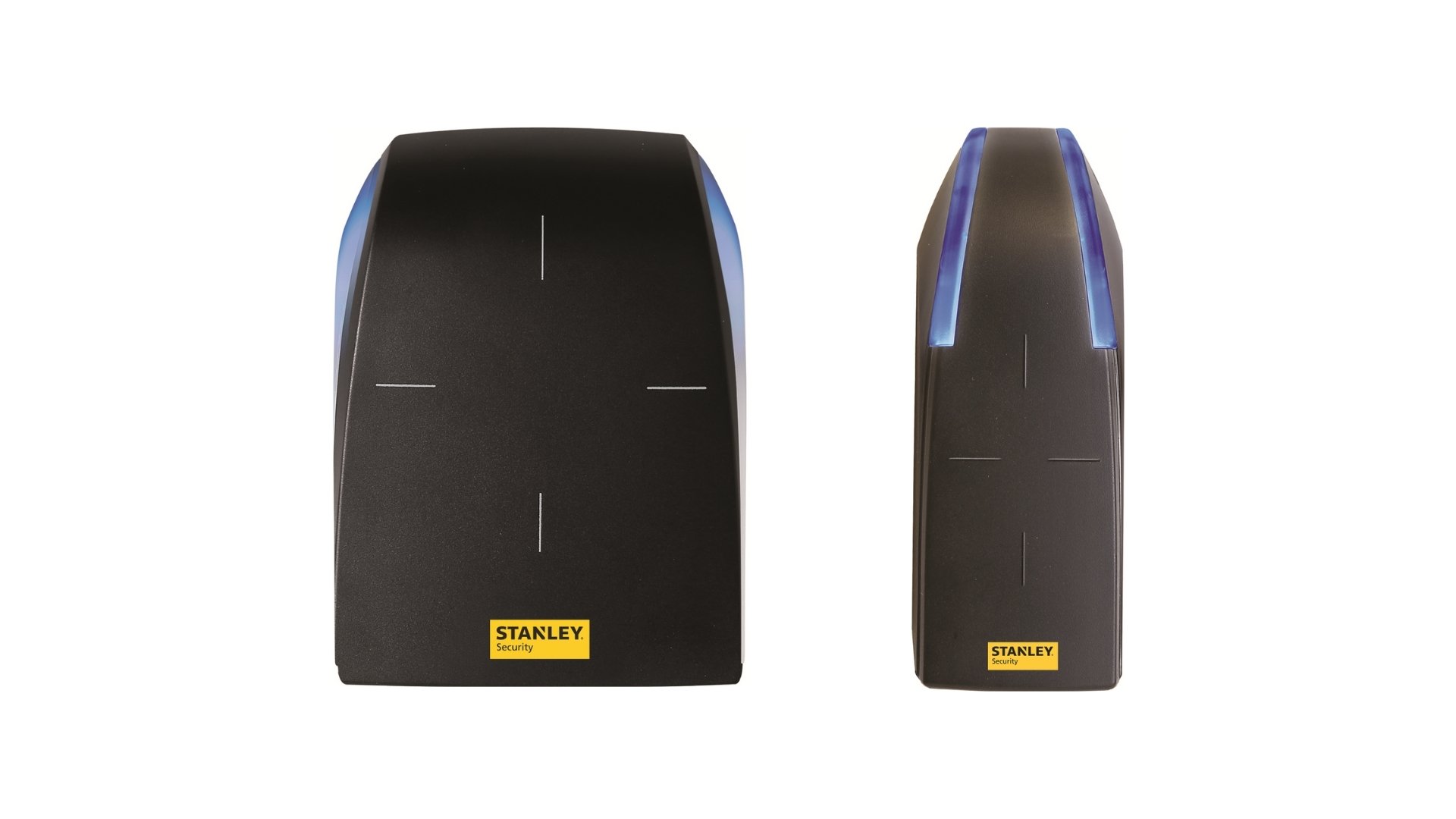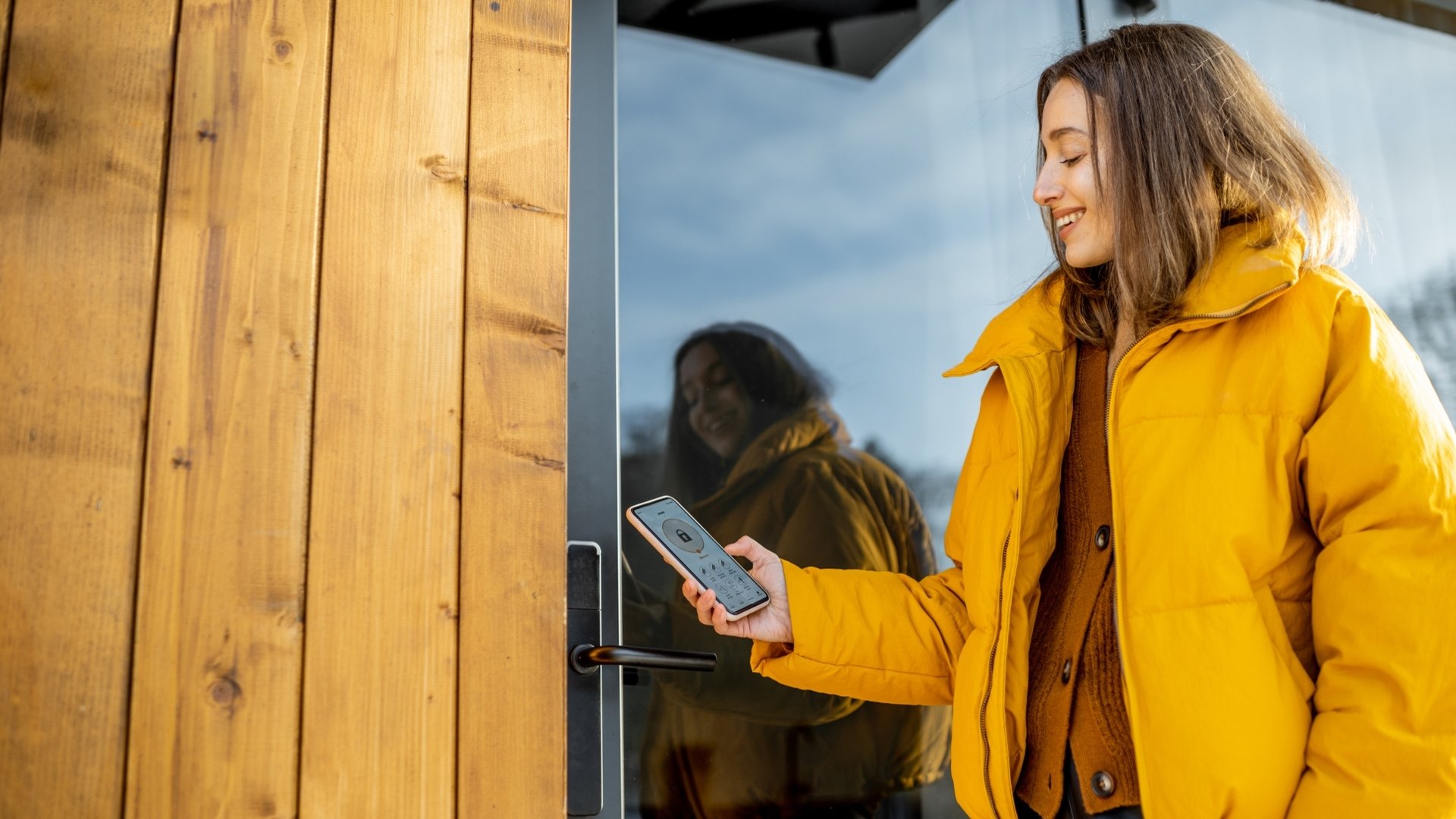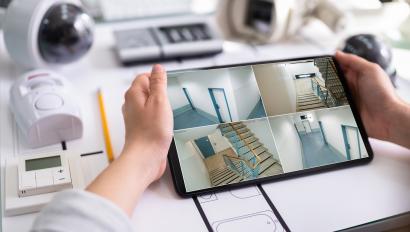Is Smartphone-enabled Access Control a Better Option for your Organisation?

In this blog, we share everything you’ll need to know to get your head around the uses and benefits of smartphone access control. We’ll cover:
- What is smartphone access control?
- How do smartphone-enabled access readers work?
- What are the benefits of using smartphones for access control?
- Frequently asked questions about smartphone access control
Starting from scratch with access control? Here’s a great guide to help you choose the best system.
What is smartphone access control?
For many years, access control with proximity cards and fobs using RFID (Radio Frequency Identification) have been the most widely used method for users (employees, visitors, guests) to provide their credentials when entering an access-controlled area. It makes sense, as cards and fobs have proven to be reliable so far and the process of using one usually takes a fraction of a second.
But there are still challenges in using cards and fobs to control access and concerns have been raised, most commonly, about people losing them or fears of cloning. Many organisations are now looking for a more agile and potentially more secure way to control the flow of people in and around their premises – whether that may be a shop, office block, public sector building, or large industrial plant.
Enabling employees to use access control with their smartphone instead of cards or fobs can offer many additional benefits while maintaining at least the same level of speed and reliability.

How do smartphone-enabled access readers work?
Smartphone enabled readers look similar to typical card or fob readers and they are also capable of reading various formats of traditional cards and fobs, as well as smartphone credentials. Smartphone enabled access control readers can cost EUR 190-230 approximately and work with the help of a smartphone app that can be downloaded for free. Of course, the main point of difference from traditional readers is how they’ll be used.
Thankfully, using your smartphone credentials is as easy as 1-2-3:
- The user downloads a small app from the Google Play Store (Android) or Apple App Store (iPhone).
- On first launch the app will generate a random and unique ID, which can be entered into the access control system against the employee/keyholder record.
- The employee can now present their phone to the reader much like a traditional card or fob.
More advanced service options can also offer additional functionality and convenience, especially for busy sites or areas with heavy foot-traffic:
- Tap-Tap mode – The user leaves their smartphone in their pocket, approaches the reader, and taps the phone firmly twice. This can improve the time taken to gain access to an area as users don’t have to search their pockets for their card or fob or remove a wallet, purse, or a set of keys. It can also help in areas where there may be a higher risk of a phone being snatched away – for example, by an attacker outside a door that leads to the street.
- Slide mode – The user leaves their phone in their pocket or bag and places their hand close to the reader. A similar convenience to tap-tap but provides support to those who don’t have pockets that fit their phone or choose to keep their phone in a bag.*
- Hands-free mode – The user simply approaches the reader with their smartphone on their person or in their car. The range can be configured on a per-reader basis. This is ideal for car park barriers where the phone can be left in its charging cradle and the employee simply drives up to the barrier without having to touch the phone.
- Remote mode – The user presses a button on the phone screen to activate the reader. This is perfect for receptionists to remotely open a door for a visitor without having to wire in a release button to their desk.
As you can see, each of the above methods can provide additional convenience for users and the business. Your site can benefit from a more agile set-up too, as the reader can also be configured to enable or disable each feature as required.
For example, the remote mode might only be enabled for the reception door, the hands-free only enabled for the car park barrier and main entrance, and all of the four modes above may be disabled for the server room meaning the few people who access that room have to present their phone or a card or fob to the reader.
Access points are Bluetooth enabled
The communication between the reader and the smartphone is via Bluetooth Low Energy (BLE), which has a negligible effect on battery life of the smartphones. BLE only consumes energy when being actively used and even then, it is only between 1% and 3% of battery life per day. Users do not have to pair their phones with the readers.

What are the benefits of using smartphones for access control?
There can be many benefits to using smartphone access control depending on your unique needs and the solutions you choose. However, here are some of the main way that you could benefit:
1. Improved security
It can be common for employees to lend their card or fob to another colleague or a visitor. This can present a security risk as it may grant the visitor the same access permissions as the employee and any access event will be falsely attributed to the employee who loaned them their card.
Users less likely to lend someone their smartphone (especially a stranger) because it will likely contain photos and other personal information.
2. Per reader security settings
Each reader can be configured to require the phone to be unlocked or not. Requiring the phone to be unlocked can provide dual-factor authentication for additional security.
3. Supporting a safer workplace
Using smartphones instead of typical PIN or fingerprint readers can help to reduce the risk of spreading germs and disease in your site.
4. More convenience for employees
Smartphones have become ubiquitous and most people carry them on their person whenever they are away from their home. It is therefore convenient to use the device they are already carrying instead of adding another card or fob to carry and remember. The advanced options mentioned earlier also provide additional convenience, especially when the users are carrying objects.
5. Reduce wasting time on lost fobs/cards
As we’ve mentioned, it is common for employees to forget to bring their card or fob. Typically, these employees will ask the administrator of the access control system for a temporary card for the day. These cards will then need to be handed back in, and if not, the administrator will have to contact the employee.
This can waste time for the administrator and the employee. Employees are much more likely to remember to bring their smartphone with them and will turn back to get their phone if they realise that they don’t have it on the way to work!
6. Remote issuing of credentials
Cards and fobs must be handed to or posted to the user. On the other hand, the smartphone credentials can be sent via email or the user can read the free credential number over the phone to the administrator. The user can arrive on site for the first time and immediately have the appropriate access permissions.
7. Card cost and environmental impact
The smartphone enabled readers offer free credentials and the paid-for credentials can be recalled remotely by the administrator and issued to another user without wasting plastic – supporting a more environmentally friendly solution.
On the other hand, cards and fobs must be purchased and issued to employees and are frequently not handed back in for reuse, which has a financial cost and impacts the environment through plastic waste.
8. Cloning protection
Last but by no means least, smartphone credentials are clone resistant. While some formats of cards/fobs do offer clone resistance, the majority can be cloned relatively easily.
Frequently asked questions about smartphone access control
Absolutely. Most access control systems allow multiple credentials to be assigned to a user, so they could keep hold of their card and fob and trial the smartphone app at the same time. Anyone unable or unwilling to use a smartphone can use a card or fob instead. Over time these people will see others using their smartphones and hopefully change their mind.
It could be possible there is no need to replace your existing access control system to use smartphone readers. A security expert will be able to answer for sure once they have surveyed your site.
The employee can be issued with a temporary card or fob. This is not dissimilar to dealing with employees who have forgotten their card, only this typically happens far less frequently than forgotten cards.
There is a small risk, just as there is with employees losing cards and fobs, but this can easily be fixed by removing the credentials from the access control system or disabling the employee/keyholder record. The likelihood of this occurring is much lower with smartphones, which employees tend to look after much more carefully than key cards.
In addition, the readers can be configured to require the smartphone be unlocked to gain access, meaning the employee would have to lose the phone and reveal their password or PIN number to present a security risk.
The app communicates securely with the reader using Bluetooth Low Energy and doesn’t require an Internet connection (whether on Wi-Fi or your mobile network). The reader will work even if the company network is down.
Yes. There are smartphone readers available that are water resistant and impact resistant, making them suitable for indoor or outdoor use.
We work with carefully selected app providers to minimise privacy and security risks and will work through any questions or concerns our customers may have on the interplay between their specific environment and the type of credentialing system enabled through smartphones.
No. Once purchased the credentials last indefinitely. They can also be recalled from one employee and reassigned to another employee, provided this is done before the first employee removes the app from their phone. Typically, the number of purchased credentials could be lower than for cards/fob as there can be less waste due to people losing, damaging, or simply not handing the card back when they leave.
Take action today
Now you know what a smartphone access control system looks like, how it works, and what the benefits are. So, what do you need to do next? A Securitas Technology expert will be happy to guide you through the process of planning and implementing a smartphone-enabled access control system on your site, whether that’s an upgrade or a new system built from scratch.























